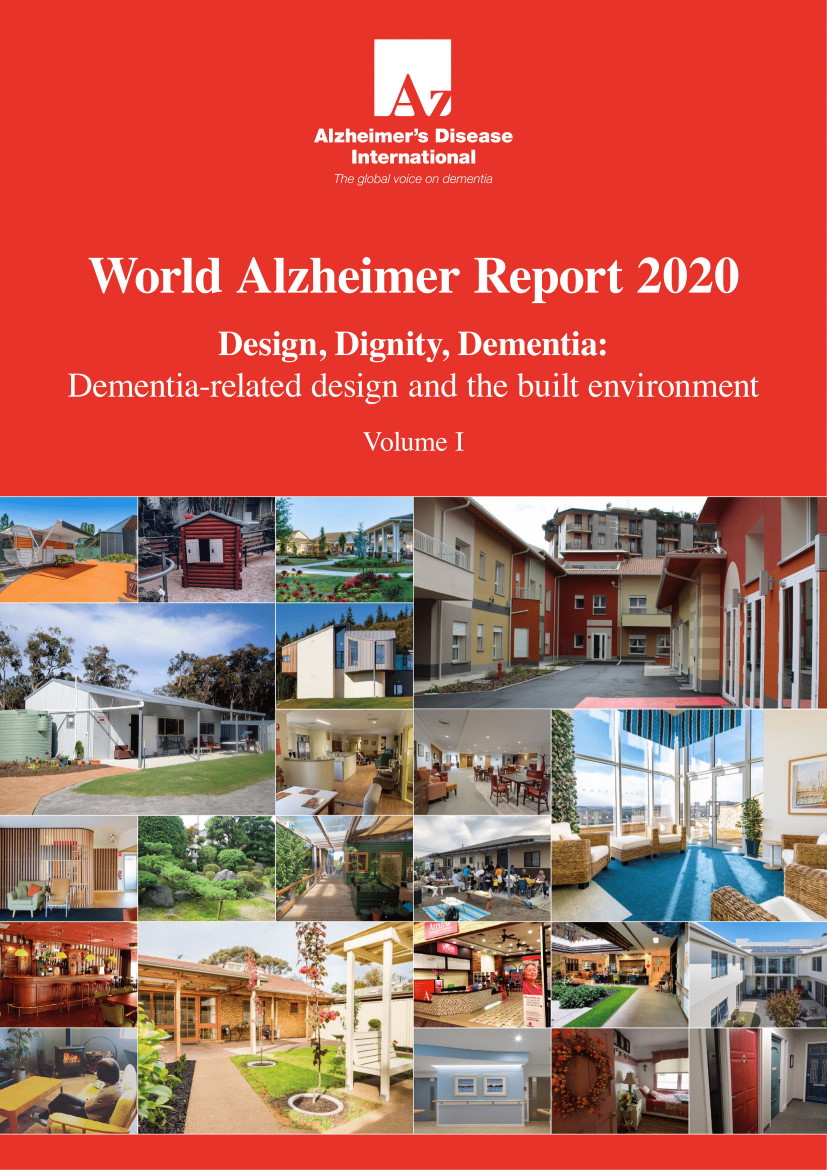In this blog, John Zeisel, Richard Fleming, and Kirsty Bennett, authors of the World Alzheimer Report 2020 ‘Design, Dignity, Dementia: Dementia-related design and the built environment’, discuss the creation of a new national dementia plan guide for those looking to include dementia-related design in their own national dementia plans.
For thirty years we have been studying how appropriately planned, built and natural environments can serve as a treatment for dementia. While the designed environment is not a cure, it can reduce what most people consider symptoms of this disability: loss of direction, anxiety, hopelessness, agitation and meaninglessness. We put together our own efforts, along with that of 58 experts from 17 countries in the two volume World Alzheimer Report 2020, which European Healthcare Design recognised with an award for Outstanding Contribution to Global Knowledge.
A major purpose of the World Alzheimer Report 2020 is to serve as a fount of information for those who see the physical environment as one of the interventions to include in the national dementia plan (NDP) that they may be editing, writing, developing or just thinking about for their country.
While the 2020 report is exhaustive, it is not the easiest document to digest. To overcome this challenge, we have produced two other documents.
First, active on the web today and highlighted on the ADI website, is the Dignity Manifesto of Design-for People Living with Dementia, signed by hundreds of world experts, including representatives of the United Nations. The manifesto exists as a concise living international beacon for those seeking to identify design goals, values, and principles to serve the needs of persons living with dementia worldwide. One intended use is to act as a focus for governments developing national dementia plans.
Second, we created an NDP Digital Linking Guide, connecting major NDP topics to relevant parts of the World Alzheimer Report 2020. This guide introduces the reader to two major sources of knowledge. First, the guide focuses the reader on all the places in a comprehensive NDP where the designed environment might add a critical dimension. Second, at each of these places a hyperlink to the most relevant paragraphs in the World Alzheimer Report 2020 is provided.
We have designed these two documents with the specific goal of making it easy to include consideration of the physical environment in national dementia plans.
For those who want a quick and easy, yet meaningful way to include reference to the physical environment in a national dementia plan, we recommend inserting the Manifesto in its entirety directly into the NDP as a separate section. A brief introduction will suffice to let readers and practitioners know that this essential list summarises the most important items. The manifesto is intense and every word counts. It is more than a summary; it reflects the essence of the longer report.
For those with the goal of including reference to the Designed Physical Environment in every place it is relevant, we recommend the NDP Digital Guide. In fact, we recommend reading it through entirely and following each hyperlink to its source to get a sense of it in its entirety. This will give the reader rapid access to the content necessary to ensure that their NDP is systematically linked to, and based on, the most current and authoritative source of dementia design information available.
Help us make sure that the principles of the World Alzheimer Report 2020 remain alive and continue to benefit those living with dementia and their carers.


